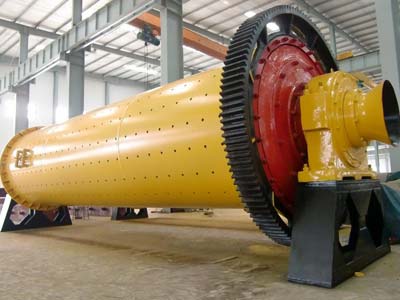
Ball mills are one of the most commonly used equipment in the mining and milling industries, and their popularity is due to their high efficiency, versatility, and relatively low cost.
24 Online Service

A ball mill is a type of grinder that is used to grind and blend materials for use in mineral dressing processes, paints, pyrotechnics, ceramics, and selective laser sintering.
The basic construction of a ball mill consists of a rotating drum filled with grinding media, such as balls or rods, which are used to grind the material being processed. The drum is mounted on a horizontal axis and is partially filled with the grinding media. As the drum rotates, the grinding media tumble and crush the material, resulting in the desired size reduction.
There are several different types of ball mills, each with their own specific characteristics and applications. The most common type of ball mill is the planetary ball mill, which is used for mixing and grinding small batches of materials in a laboratory setting. Other types of ball mills include the ball mill with a single long drum or tube, the ball mill with multiple drums or tubes, and the vibratory ball mill, which is used for grinding and mixing materials on a large scale.
The design of a ball mill is critical to its performance and efficiency. The diameter and length of the mill determine the amount of grinding surface, while the speed of the mill determines the amount of energy required to achieve the desired size reduction. The ball size and density also play a role in the grinding process, as smaller balls provide a higher surface area for grinding, while larger balls can crush the material more effectively.
In addition to size reduction, ball mills can also be used for mixing and homogenizing materials. In some cases, ball mills are used to produce materials with specific properties, such as high strength ceramics or magnetic materials. The versatility of ball mills makes them a valuable tool in many industries, including mining, ceramics, and pharmaceuticals.
One of the key advantages of ball mills is their ability to operate in a closed circuit, which allows for precise control of the particle size distribution. In a closed circuit, the material being processed is fed into the mill along with a controlled amount of grinding media. The product is then discharged from the mill and screened to separate the coarse and fine particles. The coarse particles are returned to the mill for further grinding, while the fine particles are sent to a downstream process or product.
Another advantage of ball mills is their low maintenance requirements. The simplicity of the design and the use of durable materials make ball mills relatively easy to maintain and repair. In addition, the use of ceramic or rubber lining in the mill can help to reduce wear and extend the life of the equipment.
Despite their many advantages, there are also some limitations to the use of ball mills. One of the biggest challenges is the potential for contamination of the material being processed. The grinding media can introduce impurities into the material, and the lining of the mill can also contribute to contamination. To minimize contamination, ball mills are often made from materials that are inert or chemically stable, and they may be lined with materials such as alumina, zirconia, or rubber.
Another limitation of ball mills is their low efficiency when it comes to fine grinding. The high energy consumption required to achieve small particle sizes can make ball mills less economical than other methods of size reduction, such as jet milling or high-pressure grinding rolls.
Ball mills are a versatile and widely used tool for size reduction, mixing, and homogenizing materials in a range of industries. They offer several advantages, including their low maintenance requirements and ability to operate in a closed circuit, but they also have limitations, such as the potential for contamination and low efficiency in fine grinding. Despite these limitations, ball mills remain a critical component of many industrial processes and are likely
Our Projects
Copyright © ZENITH, All Right Reserved.
